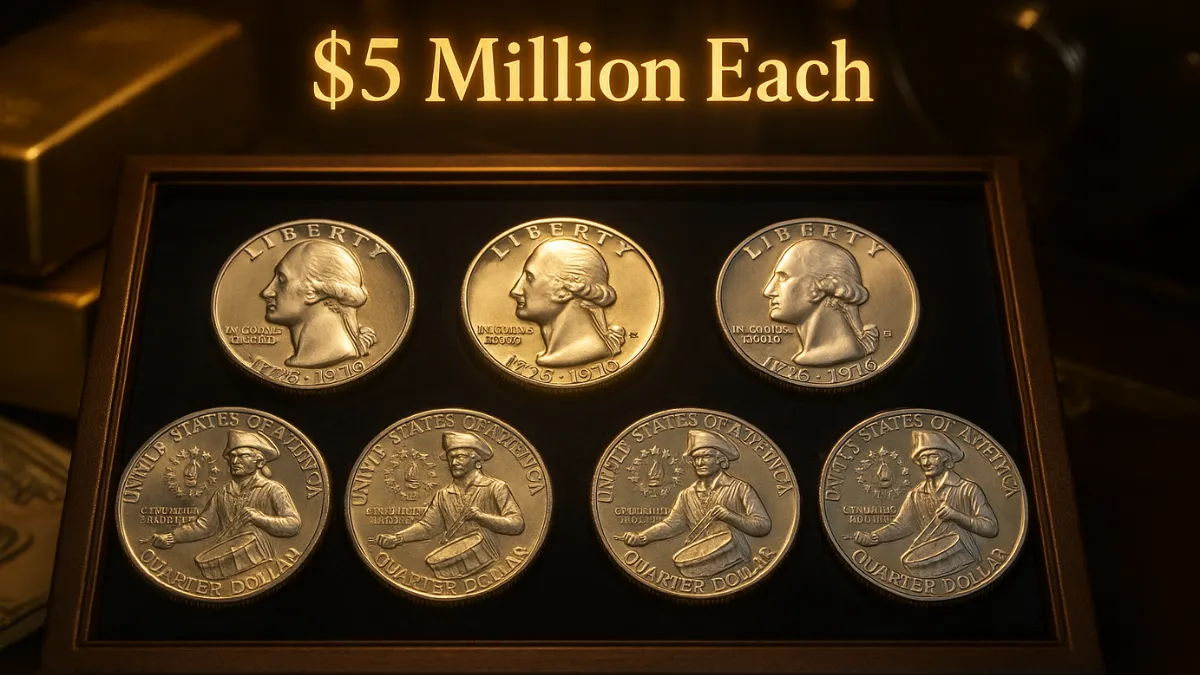The Million-Dollar 1976 Bicentennial Quarter: A Small Coin That Could Change Your Life
Can a quarter really be worth over a million dollars? It might sound crazy, but one coin from the 1970s has surprised collectors with how valuable it can be—possibly changing someone’s financial future forever.
Let’s talk about the 1976 Bicentennial Quarter. This special edition 25-cent coin has grabbed a lot of attention from collectors because of its rare errors and unique features. While millions were made, a few rare types are worth huge amounts of money.
In this article, you’ll learn about the background of this historic coin, what minting mistakes can boost its value, and examples of real auction sales where these coins sold for tens or even hundreds of thousands of dollars.
The History of the 1976 Bicentennial Quarter
The U.S. Mint created the 1976 Bicentennial Quarter to celebrate America’s 200th birthday. Instead of the usual eagle on the back, this coin shows a Revolutionary War drummer boy and a torch with thirteen stars, representing the original 13 colonies. Artist Jack Lahr designed it, and it’s marked with the dual date 1776–1976 to honor the event.
About 1.7 billion of these quarters were made. But a few have rare minting mistakes or were made with special materials, making them extremely rare and wanted by coin collectors.
Minting Mistakes That Make These Coins Valuable
Collectors often love coins for their history, but coins with minting mistakes are the most exciting. These types of coins can be worth far more than 25 cents. Here are the top error types that have made some 1976 quarters extremely valuable:
1. Double Die Errors (DDO and DDR)
This mistake happens when the design on the coin is accidentally doubled. On the Bicentennial Quarter, you might see it in words like LIBERTY, IN GOD WE TRUST, or the date. These coins can sell for $2,000 to $5,000 based on how clear the doubling is and the coin’s condition.
2. Struck on the Wrong Planchet
Some quarters were accidentally made on metal blanks (planchets) meant for other coins like dimes or pennies. These rare mistakes are worth between $10,000 and $25,000, especially if certified by trusted graders like PCGS or NGC.
3. Missing Clad Layer or Split Planchets
Sometimes, the outer nickel layer didn’t stick properly or fell off, showing a copper core. These copper-looking quarters could sell for $2,000 to over $10,000 depending on condition.
4. Brockage Errors (Mirror Images)
This rare mistake happens when one coin gets stuck in the press and stamps its image onto the next one, leaving a mirror-like print. Full brockage errors on 1976 quarters are very rare and have sold for $15,000 to $50,000.
Jaw-Dropping Auction Sales
Some of these special Bicentennial Quarters have already sold for amazing amounts. Check out these real auction results:
- Silver Proof with Double Die Obverse: Graded PR69 and sold for $13,500 by Heritage Auctions.
- Struck on a 1-Cent Planchet: Authenticated by NGC, this coin sold privately for $25,000.
- Double Struck and 80% Off-Center: This coin sold at auction in 2021 for $8,800.
- Full Brockage Error: Sold for $40,000 through Stack’s Bowers.
The Legendary Million-Dollar Quarter
While no one has confirmed it yet, there are rumors about a one-of-a-kind Bicentennial Quarter with multiple extreme errors that might be worth more than $1 million.
How to Tell If Your Quarter Is Rare
Think you have one of these special coins? Here’s how to check:
- Weight: Use a digital scale. Normal quarters weigh 5.67 grams. A different weight could mean it’s a wrong planchet.
- Color: Real silver planchets look dull gray. If your quarter is reddish, it may have a missing clad layer.
- Design Errors: Look for doubled letters or numbers, off-center images, or strange markings.
- Mint Marks: Use a magnifier to see if the mint mark is missing or re-punched.
Hidden Treasures in Everyday Change
Experts believe many rare Bicentennial error quarters still haven’t been found. With so many made in the 1970s, and less quality control back then, some of these mistake coins made it into the public.
You might find one in a coin jar, old wallet, or junk drawer—just waiting to be discovered.
What to Do If You Find One
If a 1976 quarter in your collection looks unusual, follow these steps:
- Don’t Clean It: Cleaning can scratch the coin and lower its value.
- Weigh and Take Photos: Use a good scale and clear photos to document it.
- Get It Graded: Submit it to professional graders like PCGS or NGC.
- Talk to Experts: Contact top auction houses like Heritage Auctions or Stack’s Bowers if you think it’s valuable.
FAQs
Q: How can I tell if my 1976 quarter is rare?
A: Look for things like doubled words, strange colors, or different weights.
Q: Which errors areworth the most?
A: Mistakes like wrong planchet strikes, full brockage, and double dies bring in the highest prices.
Q: Can I sell a rare Bicentennial Quarter?
A: Yes! Once it’s graded, you can sell it through coin dealers or auction houses.
Q: Is the million-dollar quarter real?
A: It hasn’t been proven yet, but collectors believe one rare error version could reach or even pass $1 million.



